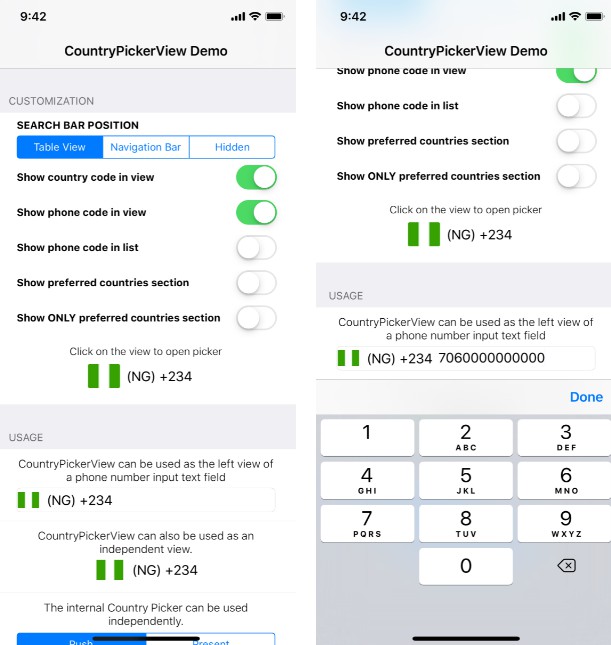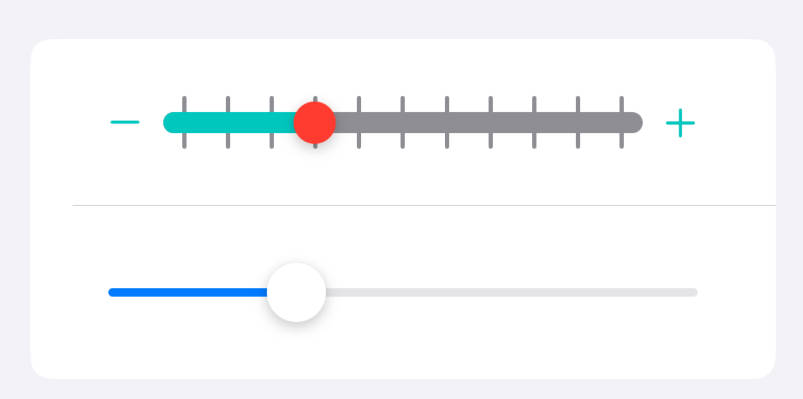CustomSegue
 Custom segue for OSX Storyboards. Slide and cross fade effects, new customized window.
Custom segue for OSX Storyboards. Slide and cross fade effects, new customized window.
class MyViewController: NSViewController {
override func prepareForSegue(segue: NSStoryboardSegue, sender: AnyObject?)
if segue.identifier == "configured" {
if let segue = segue as? PresentWithAnimatorSegue, animator = segue.animator as? TransitionAnimator {
animator.duration = 1
animator.transition = [.SlideDown, .Crossfade]
}
}
}
TransitionAnimator transition is configured via NSViewControllerTransitionOptions, and suppress the need to use a parent controller with transitionFromViewController function.
Demo
In Example folder you can launch pod install and open Example.xcworkspace
How to use
Use PresentWithAnimatorSegue in your storyboard or use one of already configured segue: SlideDownSegue, SlideUpSegue, SlideLeftSegue, SlideRightSegue, ChildWindowSegue, …
Configure segue
In your storyboard add an storyboard identifier to the segue.
Then in your source view controller, you can configure the segue in prepare(for segue function.
class MyViewController: NSViewController {
override func prepare(for segue: NSStoryboardSegue, sender: AnyObject?) {
if segue.identifier?.rawValue == "PetDetail" {
...
You can use Natalie to generate code about segue for your controller. With this generate code you can do
override func prepare(for segue: NSStoryboardSegue, sender: AnyObject?) {
if segue.identifier == "PetDetail" {
// or better the constant generated
if segue == MyViewController.Segue.petDetail {
You can change the duration, the transition type, … on animator object of type TransitionAnimator
if let segue = segue as? PresentWithAnimatorSegue, animator = segue.animator as? TransitionAnimator {
animator.duration = 1
animator.transition = [.SlideDown, .Crossfade]
}
For ChildWindowSegue you can customize the NSWindow, which display the destination controller
if let segue = segue as? ChildWindowSegue, animator = segue.animator as? ChildWindowAnimator {
animator.windowCustomizer = { window in
window.styleMask = NSBorderlessWindowMask
window.setFrameOrigin(NSPoint(...))
}
}
?
You can also put your own custom animator.
if let segue = segue as? PresentWithAnimatorSegue {
segue.animator = MyAnimator()
}
Others segues
ReplaceWindowContentSegue
Replace contentViewController of sourceController parent NSWindow by destinationController
?
You can store this segue into destinationController and call unperform on it to restore sourceController
SplitViewSegue
Segue that replace the last split view item or add a new one into the sourceController parent (NSSplitViewController)
Set replace to false on segue, to add a new split view item.
DismissSegue
Segue to dismiss current from controller
Allow to display in storyboard the action as segue instead of simple IBAction
TransitionFromViewSegue
Segue using parent controller of source and transitionFromViewController function
⚠️
parentViewController must be set and the same for the sourceController and destinationController
TablePopoverSegue
Show destinationController in a popover with a position relative to the selected table row
⚠️
You must set the tableView into segue object (do it in prepareForSegue)
?
You can display detail about selected row in a nice way. So in prepareForSegue get table view selected row and pass data to destinationController
Present view controller utility method
Little utility method added to NSViewController using new enum PresentationMode.
viewController.present(.asSheet)
viewController.present(.asModalWindow)
viewController.present(.segue(segueIdentifier: "id"))
viewController.present(.animator(animator: MyAnimator()))
viewController.present(.asPopover(...
⚠️
parentViewController must be set
Installation
Using CocoaPods
CocoaPods is a centralized dependency manager for Objective-C and Swift. Go here to learn more.
-
Add the project to your Podfile.
use_frameworks! pod 'CustomSegue'
-
Run
pod installand open the.xcworkspacefile to launch Xcode.
Using Carthage
Carthage is a decentralized dependency manager for Objective-C and Swift.
-
Add the project to your Cartfile.
github "phimage/CustomSegue" -
Run
carthage updateand follow the additional steps in order to add Prephirences to your project.












